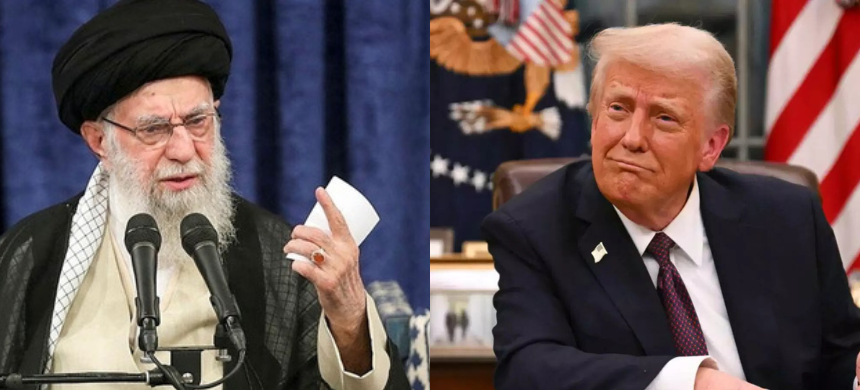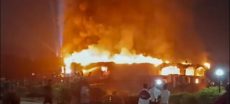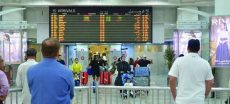U.S.-Iran Nuclear Talks Begin in Oman Amid Heightened Tensions
The United States and Iran have initiated crucial nuclear negotiations in Oman today, signaling a rare diplomatic development in a region long defined by hostility and mistrust. These indirect discussions, mediated by Oman, come after weeks of heightened tensions and military threats, with both countries warning of severe consequences if the talks fail.
Diplomatic Efforts Led by High-Level Envoys
The negotiations bring together U.S. Special Envoy Steve Witkoff and Iranian Deputy Foreign Minister Abbas Araghchi, both of whom arrived in Muscat after extensive regional consultations. Witkoff had met with Russian President Vladimir Putin in Moscow, while Araghchi carried a mandate from Iran’s Supreme Leader Ayatollah Ali Khamenei.
Read More: China, Russia, and Iran Hold Trilateral Talks on Nuclear Programme
The talks are described as “indirect” by Iranian officials and “high-level” by the White House. Despite this, tensions are palpable, especially after U.S. President Donald Trump issued a two-month ultimatum to Iran, demanding it curtail its uranium enrichment activities or face potential military action, possibly involving U.S. ally Israel. On Monday, Trump warned that if the talks collapse, Iran could face a “very bad day.”
Internal Pressures in Iran
Khamenei’s decision to engage in these talks comes amid intense pressure from within Iran’s ruling elite. Key figures, including Parliament Speaker Mohammad Baqer Qalibaf and President Massoud Pezeshkian, have warned of economic collapse and social unrest if military conflict breaks out. Cities such as Yazd are already grappling with blackouts and water shortages, while government offices and schools remain closed due to the crisis.
Sources close to Tehran’s leadership suggest that Khamenei has authorized indirect negotiations under strict conditions. Iran is willing to limit its uranium enrichment and allow increased international monitoring but insists it will not negotiate on its ballistic missile program—an issue that U.S. officials view as critical to any long-term agreement.
Backchannel Diplomacy and Economic Incentives
Despite both sides claiming that there will be no direct engagement, history suggests otherwise. Former diplomat Hossein Mousavian notes that similar denials preceded direct interactions during the 2015 nuclear talks. Oman’s neutral status is expected to facilitate behind-the-scenes breakthroughs.
Iran has also hinted at its openness to American investment, which may appeal to Witkoff, a former real estate mogul and close Trump ally. Iran’s reformist media has highlighted the potential economic recovery through sanctions relief, though hardliners remain skeptical.
“This is not just about uranium levels or centrifuges,” says Dr. Nasrin Alavi, a political analyst. “This is about the survival of a system facing domestic dissent and external threats. There’s a real willingness in Tehran to test the diplomatic waters—albeit with caution.”
Urgency and Military Tensions
The urgency of the talks is underscored by military developments. In early April, the U.S. deployed B-2 bombers to Diego Garcia, a strategic military base in the Indian Ocean, as a show of force. Experts view this as a clear signal that Washington is considering military options.
“This has echoes of pre-war mobilizations seen in 2001 and 2003,” warns David Rigoulet-Roze, a Middle East security expert. “It’s not a bluff. Both parties know this could spiral fast if diplomacy fails.”
The Role of Europe and Russia
While the U.S. and Iran dominate the headlines, regional and global powers are watching closely. Germany, France, and the United Kingdom, all co-signatories of the now-defunct Joint Comprehensive Plan of Action (JCPOA), have expressed cautious optimism about the talks in Oman.
Meanwhile, Russia and China have held technical consultations with Iran on nuclear policy. Witkoff’s previous meeting with Putin has raised speculation that Moscow may act as an unofficial guarantor, helping to nudge Iran toward compromise.
Iranian Response and Strategic Messaging
Iranian Foreign Ministry spokesperson Ismail Baqai has emphasized that Iran is offering diplomacy a chance with “good intentions and full vigilance.” As the May deadline approaches, there is a growing sense that these talks in Oman may represent the last hope for a diplomatic resolution.
Why Oman?
Oman’s unique role as a regional mediator makes it an ideal location for these high-stakes talks. The sultanate’s neutral, non-interventionist foreign policy and trusted relationships with both Tehran and Washington provide a quiet backdrop for dialogue, allowing for diplomatic exchanges when no other options are available.
“Oman doesn’t make headlines, and that’s exactly why it works,” notes Dr. Mahjoob Zweiri of Qatar University. “They’re invisible until they matter.”
What’s Next?
With Trump’s deadline looming in mid-May, the world watches closely as the Oman talks unfold. While expectations are low, even a limited agreement could offer a temporary stabilization and buy time for further negotiations.
Key unresolved issues include Iran’s missile program, regional proxy support, and the full return to JCPOA limits.
Potential outcomes include a framework agreement, partial sanctions relief, or escalation toward military confrontation. As the clock ticks down, the stakes have never been higher.











